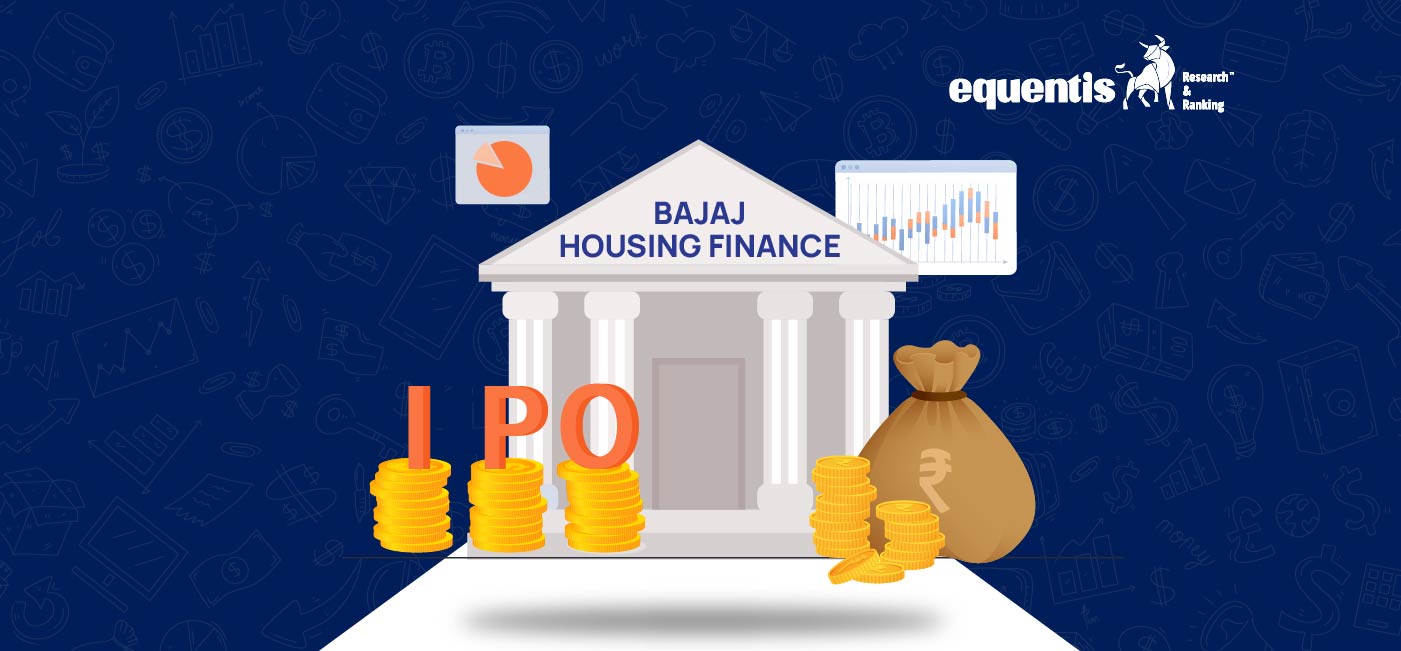Listed IPOs
Latest IPOs listed on the stock exchange
What are listed IPOs?
Latest IPOs that have listed recently
Listed IPOs are companies that have completed their Initial Public Offering (IPO) process and are now officially traded on a stock exchange. On listing, investors can now buy or sell these shares in the open market at market-driven prices. Tracking listed IPOs can benefit those looking to invest in recent public companies.
Listed IPOs
Get all the details here!

Company Name
Listing Date
IPO Price
Listed Price
% Change
CMP
![]() Unlock Stock of the Month
Unlock Stock of the Month
T&C*
How do IPOs work?
An IPO (Initial Public Offering) is when a private company offers its shares to the public for the first time. Investors can apply to buy these shares during the IPO in the primary market. Once the IPO is complete, the company's shares are listed on stock exchanges, where they can be traded publicly. Companies usually launch an IPO to raise funds for growth and expansion.
 Learn More
Learn MoreHow do you apply for listed IPOs?
To participate in an IPO, you first need to open a Demat and trading account. Once your account is set up, check the available IPOs and select the one you wish to invest in. Next, apply through your broker account and confirm your application. After submitting your application, wait for the allotment process to complete. Once the shares are allotted to you, you can begin trading them in the stock market.
 Learn More
Learn MoreWho can invest in listed IPOs?
- Retail Investors: Individual investors with a demat account.
- Qualified Institutional Buyers (QIBs): Institutions like mutual funds and insurance companies.
- Foreign Institutional Investors (FIIs): Foreign entities allowed under regulatory norms.
- High Net-Worth Individuals (HNIs): Wealthy individuals with significant financial resources.
- Corporate Entities: Companies investing as part of their strategy.
IPO reads
Stay updated with the latest IPO developments
More on IPOs
Navigate your way to other IPO resources
Spotlight on IPOs
Breaking down IPOs for you!
FAQs on listed IPOs
Find answers to common questions!
No, once listed, IPO shares are traded on the stock exchange. Investors buy and sell them through brokerage accounts, and the company does not directly issue shares to individual buyers.
Yes, listed companies can conduct secondary offerings to raise additional capital. This helps fund expansion, research, and other strategic initiatives.
Listed IPOs are exposed to market volatility, economic conditions, and regulatory changes. Maintaining investor confidence and effective communication becomes crucial.
Share value is influenced by market forces such as supply, demand, and investor sentiment. Stock prices fluctuate based on a company's perceived performance and potential. Do shareholders have voting rights in a listed IPO? Yes, shareholders typically have voting rights, allowing them to participate in decisions during annual general meetings and have a say in the company's affairs.
Investors can monitor share prices in real-time through stock market platforms, financial news, and the company's investor relations page. Stock tickers provide up-to-date information.
Listed IPO refers to a company's initial public offering, in which its shares are now available for trading on a stock exchange, allowing investors to buy and sell them on the open market.
After the IPO launch, the company applied for listing on a stock exchange. Upon approval, its shares become part of the exchange's listed IPOs, enabling public trading.
Listing provides increased visibility, liquidity, and access to capital. Shareholders can trade their shares, and the company can raise funds through secondary offerings.
If the company declares dividends, shareholders are entitled to their share of profits. Dividends are a portion of the company's earnings distributed to shareholders.
Finding recently listed IPOs (the newest companies on the stock market) is straightforward. Here are two options: 1. Financial Websites and Apps: Numerous financial websites and mobile applications have dedicated sections for recently listed IPOs.
These platforms typically display upcoming and recently listed companies, allowing you to explore their details. 2. Stock Exchange Websites: The official websites of stock exchanges like the National Stock Exchange (NSE) or the Bombay Stock Exchange (BSE) also maintain dedicated sections for recently listed IPOs. These sections often provide information on upcoming listings and recently listed companies with essential details for further research.
These platforms typically display upcoming and recently listed companies, allowing you to explore their details. 2. Stock Exchange Websites: The official websites of stock exchanges like the National Stock Exchange (NSE) or the Bombay Stock Exchange (BSE) also maintain dedicated sections for recently listed IPOs. These sections often provide information on upcoming listings and recently listed companies with essential details for further research.
In 2023, India witnessed 57 listed IPOs, making it the second-highest year for listed IPOs in the past decade, trailing only 2021's record-breaking 63 listed IPOs. Some of the big-ticket listed IPOs in 2023 included.
- Zomato, a leading online food delivery platform;
- Policybazaar, An insurance aggregator;
- Nykaa, A popular beauty and fashion retailer;
- Paytm, a digital payments and financial services company;
- Fabled Hotels, A hospitality company known for its luxury hotels,
- MapmyIndia: A leading provider of digital maps and navigation services,
- Burger King India: The Indian franchise of the popular fast-food chain,
- Star Health and Allied Insurance is a leading private health insurance company in India, and Delhivery is a leading logistics and delivery company.
You can find historical information on listed IPOs from various sources. Financial websites: Many financial websites offer historical IPO data, including performance metrics like opening and closing prices, stock charts, and performance comparisons. Look for sections dedicated to "IPOs" or "Markets." Stock exchanges: The websites of major stock exchanges often maintain archives of listed IPOs, including performance data. Search for "listed IPOs" or "historical data" on the exchange's website.
In 2023, numerous IPOs made significant waves on their listing day. Tata Technologies Limited emerged as the frontrunner, leading the pack with an impressive 162.85% gain and setting a high benchmark for others.
Following suit, ideaForge Technology Limited, a technology-oriented company, experienced a notable 92.78% rise, while Utkarsh Small Finance Bank Limited witnessed a commendable 91.76% jump, signaling strong confidence in the financial sector. Moreover, Indian Renewable Energy Development Agency Ltd achieved an 87.47% gain, underlining the growing interest in renewable energy initiatives.
Motisons Jewellers Limited saw a substantial 83.96% increase, while Gandhar Oil Refinery (India) Limited climbed by 78.40%, showcasing diverse investment opportunities. DOMS Industries Limited rose by 68.46%, AGS Transact Technologies Limited reported a 64.00% gain, and MapmyIndia Limited notched a respectable 54.77% increase. Fabled Hotels Limited observed a 53.90% rise, collectively reflecting the dynamic and promising landscape of the IPO market in 2023.
Following suit, ideaForge Technology Limited, a technology-oriented company, experienced a notable 92.78% rise, while Utkarsh Small Finance Bank Limited witnessed a commendable 91.76% jump, signaling strong confidence in the financial sector. Moreover, Indian Renewable Energy Development Agency Ltd achieved an 87.47% gain, underlining the growing interest in renewable energy initiatives.
Motisons Jewellers Limited saw a substantial 83.96% increase, while Gandhar Oil Refinery (India) Limited climbed by 78.40%, showcasing diverse investment opportunities. DOMS Industries Limited rose by 68.46%, AGS Transact Technologies Limited reported a 64.00% gain, and MapmyIndia Limited notched a respectable 54.77% increase. Fabled Hotels Limited observed a 53.90% rise, collectively reflecting the dynamic and promising landscape of the IPO market in 2023.
An IPO allotment, the process of assigning shares to investors after a listed IPO, involves several steps: Application: Investors submit bids during the IPO window, specifying the desired number of shares. Oversubscription: When demand exceeds available shares, the process enters oversubscription.
Selection: A computerized system impartially selects winning bids based on predetermined criteria, often considering factors like bid price, investor type (retail vs. institutional), and reservation categories. Allocation: Winning applicants receive confirmation and have their shares credited to their accounts. Unsuccessful applicants receive a refund.
Selection: A computerized system impartially selects winning bids based on predetermined criteria, often considering factors like bid price, investor type (retail vs. institutional), and reservation categories. Allocation: Winning applicants receive confirmation and have their shares credited to their accounts. Unsuccessful applicants receive a refund.
Checking your listed IPO allotment status involves one of two methods:
Registrar Website: Visit the website of the registrar handling the specific IPO. They typically offer a dedicated section for status inquiries, requiring your application details like PAN and bid reference numbers.
Stock Exchange Platform: Some stock exchanges also provide allotment status checks on their websites. Look for sections dedicated to "IPOs" or "Investor Services" and search for the specific IPO you applied for.
Registrar Website: Visit the website of the registrar handling the specific IPO. They typically offer a dedicated section for status inquiries, requiring your application details like PAN and bid reference numbers.
Stock Exchange Platform: Some stock exchanges also provide allotment status checks on their websites. Look for sections dedicated to "IPOs" or "Investor Services" and search for the specific IPO you applied for.
Determining the price band for listed IPOs involves a collaborative process rather than being dictated by a singular entity. Here's how it works: The issuer company, the entity going public, plays a vital role in setting the pricing parameters. This decision is influenced by various factors, such as the company's valuation, financial performance, and comparisons within the industry.
The investment bank appointed for the IPO thoroughly analyses market demand, investor interest, and the company's financial health. Working closely with the issuer company, the investment bank advises and collaborates to determine a suitable price range that aligns with market conditions and investor expectations. This collaborative effort ensures a comprehensive evaluation and fair pricing strategy for the IPO.
The investment bank appointed for the IPO thoroughly analyses market demand, investor interest, and the company's financial health. Working closely with the issuer company, the investment bank advises and collaborates to determine a suitable price range that aligns with market conditions and investor expectations. This collaborative effort ensures a comprehensive evaluation and fair pricing strategy for the IPO.
The lot size for a listed IPO is predetermined through collaboration between the issuing company and the investment bank, considering several key factors. First, market conditions, including investor interest and overall market liquidity, are carefully considered.
Second, the company's size and valuation play a significant role; larger companies may opt for larger lot sizes to accommodate higher investment amounts. Additionally, accessibility for retail investors is a priority, ensuring a balance between affordability and encouraging broader participation from individual investors.
The ultimate objective is to establish a feasible lot size for investors and enable the company to raise its targeted capital effectively. The number of shares within a lot remains fixed, allowing investors to apply for multiples of the lot size during the IPO application period.
Second, the company's size and valuation play a significant role; larger companies may opt for larger lot sizes to accommodate higher investment amounts. Additionally, accessibility for retail investors is a priority, ensuring a balance between affordability and encouraging broader participation from individual investors.
The ultimate objective is to establish a feasible lot size for investors and enable the company to raise its targeted capital effectively. The number of shares within a lot remains fixed, allowing investors to apply for multiples of the lot size during the IPO application period.
Investing in newly listed IPOs can be tempting due to their potential for high returns. However, it's crucial to remember that these newest companies on the stock market also carry inherent risks. Unlike established companies with a long track record, recently listed IPOs may have limited information available, making it difficult to assess their future performance accurately.
Therefore, thorough research is essential before considering any latest IPO listing. It involves delving deep into the company's financials, industry trends, and market conditions. This research will help you understand the potential risks and rewards associated with the investment.
Ultimately, investing in listed IPOs should be based on your circumstances. Consider your long-term investment goals and risk tolerance. If you are a risk-averse investor seeking short-term gains, newly listed IPOs may not be suitable. Carefully analyzing and aligning your financial objectives are crucial before making investment decisions.
Therefore, thorough research is essential before considering any latest IPO listing. It involves delving deep into the company's financials, industry trends, and market conditions. This research will help you understand the potential risks and rewards associated with the investment.
Ultimately, investing in listed IPOs should be based on your circumstances. Consider your long-term investment goals and risk tolerance. If you are a risk-averse investor seeking short-term gains, newly listed IPOs may not be suitable. Carefully analyzing and aligning your financial objectives are crucial before making investment decisions.
In the context of listed IPOs, listing gain refers to the positive difference between the issue price and the listing price of the shares. Here's a breakdown: Issue price: This is the price at which the company offers shares to investors during the listed IPO application window. Listing price: This is the initial price at which the shares start trading on the stock exchange after the listed IPO process is complete.
Therefore, if the listing price is higher than the issue price, investors allotted shares during the listed IPO application process experience a listing gain.
This gain is calculated by subtracting the issue price from the listing price and multiplying the result by the number of shares allotted. It's important to remember that listing gains are not guaranteed and can be volatile. While some listed IPOs experience significant gains on the listing day, others might not or even trade below the issue price, resulting in a loss for investors.
Therefore, if the listing price is higher than the issue price, investors allotted shares during the listed IPO application process experience a listing gain.
This gain is calculated by subtracting the issue price from the listing price and multiplying the result by the number of shares allotted. It's important to remember that listing gains are not guaranteed and can be volatile. While some listed IPOs experience significant gains on the listing day, others might not or even trade below the issue price, resulting in a loss for investors.
In the world of listed IPOs, listing loss refers to the negative difference between the issue price and the listing price of the shares. Here's a breakdown: Issue price: This is the price at which the company offers shares to investors during the listed IPO application window. Listing price:
It is the initial price at which the shares start trading on the stock exchange after the listed IPO process is complete. Therefore, if the listing price is lower than the issue price, investors allotted shares during the listed IPO application process experience a listing loss.
This loss is calculated by subtracting the listing price from the issue price and multiplying the result by the number of shares allotted. It's crucial to remember that listed IPOs are inherently risky, and listing losses are possible alongside potential gains.
While some listed IPOs might surge on the listing day, others might not perform as well, leading to investor losses. Thorough research and careful analysis are essential to understand the associated risks and potential outcomes before participating in any listed IPO.
It is the initial price at which the shares start trading on the stock exchange after the listed IPO process is complete. Therefore, if the listing price is lower than the issue price, investors allotted shares during the listed IPO application process experience a listing loss.
This loss is calculated by subtracting the listing price from the issue price and multiplying the result by the number of shares allotted. It's crucial to remember that listed IPOs are inherently risky, and listing losses are possible alongside potential gains.
While some listed IPOs might surge on the listing day, others might not perform as well, leading to investor losses. Thorough research and careful analysis are essential to understand the associated risks and potential outcomes before participating in any listed IPO.
You can check the performance of a recently listed IPO by looking at its stock price on financial news websites, stock market apps, or through your brokerage platform. Most of these sources provide real-time data on price movements and historical performance.
After going public, companies must file regular financial reports with regulatory authorities, such as quarterly and annual reports (10-Q and 10-K in the U.S.). These reports contain details on revenue, profit, expenses, and other key financial metrics.
To evaluate whether a listed IPO is a good investment, consider factors such as the company’s financial health, growth prospects, industry conditions, analyst ratings, and overall market trends. Analyzing and comparing the company’s fundamentals to those of peers can also provide insight.
The stock price of a recently listed IPO can be influenced by factors such aslike overall market conditions, investor sentiment, company performance, news and announcements, and demand and supply dynamics in the market.
The listing date is significant because it marks the first day the company’s shares are traded on the stock exchange. It can affect investor sentiment and increase volatility as the market determines the stock's fair value.
Yes, once an IPO is listed and trading on the exchange, you can buy shares anytime during market hours, just like any other publicly traded stock.
Before selling shares of a listed IPO, consider the current market conditions, your investment goals, tax implications, the company’s performance, and whether you believe the stock still has growth potential.
Lock-in periods are predetermined after an IPO, during which major shareholders (like insiders and company executives) cannot sell their shares. If you are not subject to a lock-up period, you can sell your shares any time after the IPO listing.
Risks include price volatility, potential overvaluation, lack of historical performance data, and uncertain future performance. Additionally, companies may face challenges that can negatively impact their stock price post-IPO.
You can find news and updates on a listed IPO through financial news websites, stock market apps, and social media platforms. Following the company's official communications, such as press releases and investor presentations, can provide valuable insights.


 The Phoenix Mills Ltd. (PDF)
The Phoenix Mills Ltd. (PDF)
 Trending Sector
Trending Sector Top Losers
Top Losers Adani Ports and SEZ
Adani Ports and SEZ












